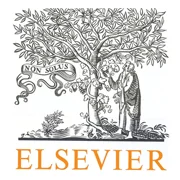دانلود ترجمه مقاله ارزیابی موانع تحول سازمانی در راستای پایداری و محرک های بهره وری پایدار
| عنوان فارسی |
ارزیابی موانع تحول سازمانی در راستای پایداری و محرک های بهره وری پایدار در صنعت ساخت فلزات |
| عنوان انگلیسی |
Examining barriers to organizational change for sustainability and drivers of sustainable performance in the metal manufacturing industry |
| کلمات کلیدی : |
صنعت ساخت فلزات؛ مدیریت تغییرات و تحولات سازمان؛ عملکرد و کارایی پایدار؛ ISM؛ TOPSIS |
| درسهای مرتبط | پایداری سازمانی |
| تعداد صفحات مقاله انگلیسی : 13 | نشریه : ELSEVIER |
| سال انتشار : 2019 | تعداد رفرنس مقاله : 79 |
| فرمت مقاله انگلیسی : PDF | نوع مقاله : ISI |
|
پاورپوینت :
ندارد سفارش پاورپوینت این مقاله |
وضعیت ترجمه مقاله : انجام نشده است. |
1. مقدمه 2. بررسی مقالات 3. روش تحقیق 4. کاربرد چارچوب پژوهشی پیشنهادی 5. نتیجه گیری

نتیجه گیری: در این تحقیق تلاش شد موانع تغییر سازمان برای پایداری و محرک هایی که از عملکرد پایدار در صنایع تولید فلز در چین حمایت می کنند با استفاده از چارچوب مدل سازی ISM-TOPSIS شناسایی و تحلیل شود. دوازده مانع تغییر سازمان برای پایداری در صنایع تولید فلز چین شناسایی شد و روش مدل سازی ساختار تفسیری (ISM) برای یافتن روابط زمینه ای در میان آنها بکار رفت. چارچوب حقوقی ناکارآمد، برنامه های منفعل ناکافی، عدم وجود مدیریت پایدار ضایعات و ترجیح عرضه کنندگان / خریداران صنعتی، در پایین مدل ساختاری قرار می گیرند در حالیکه محدودیت های مالی، فناوری ناکارآمد و عدم وجود بسته رفاه کارکنان در بالای مدل ساختاری قرار می گیرد. موانع تغییر سازمانی برای پایداری که در کف مدل ISM قرار می گیرند، موانع کلیدی نیز محسوب می شوند. این بدین معنی است که آنها موانعی قوی هستند و رفع آنها موجب رفع حداکثری موانع دیگر می شود. بعلاوه، هشت محرک که از عملکرد پایدار حمایت می کنند، شناسایی شد و TOPSIS برای مطالعه تاثیر آنها بر موانع کلیدی تغییر سازمانی در جهت پایداری بکار رفت، در نتیجه محرک ها الویت بندی شد. اجرای مقررات دولتی، ادغام پایداری در برنامه های کنشگرای، تبلیغ محصولات پایدار و و توسعه زیرساختار و تاسیسات برای پایداری تاثیرگذارترین عوامل محرک حمایت کننده از عملکرد پایدار شناخته شدند. محرک های بسیار تاثیرگذار که از عملکرد پایدار حمایت می کنند، می توانند بر موانع کلیدی تغییر سازمان برای پایداری غلبه کنند، در نتیجه بیشتر موانع دیگر را نیز برطرف کنند. چارچوب مدل سازی فرضی موانع تغییر سازمانی برای پایداری و محرک ها در صنایع تولید فلز در چین را که در این تحقیق ایجاد شد، می توان در شرکت های تولیدی دیگر در کشورهای صنعتی یا حتی در کشورهای در حال توسعه بکار برد. هم چنین می توان موانع دیگری را نیز برای تغییر سازمانی برای پایداری محرک های حمایت کننده از عملکرد پایدار شناسایی کرد. در تحقیق حاضر 12 مانع تغییر سازمانی برای پایداری و 8 محرک حمایت کننده از عملکرد پایدار شناسایی شد اما ممکن است در تحقیقات آینده موانع دیگر تغییر سازمانی برای پایداری و محرک های بیشتری برای حمایت از عملکرد پایدار، پیدا شود.
Conclusion: In this research study, an attempt has been made to identify and analyze the barriers to organizational change for sustainability and drivers which support sustainable performance in the metal manufacturing industry in China using the ISM- TOPSIS modeling framework. Twelve barriers to organizational change for sustainability in the metal manufacturing industry in China have been identified and interpretive structural modeling (ISM) methodology has been used for finding contextual relationships among them. Inefficient legal framework, inadequate proactive plans, lack of sustainable waste management and preferences of suppliers/ institutional buyers are coming at the bottom of the structural model while financial constraints, inefficient technology and lack of employee welfare package are coming at the top of the structural model. The barriers to organizational change for sustainability which are coming at the bottom level of ISM model are also the key barriers. This means that they are the highly powerful barriers and removal of the barriers will remove maximum of the other barriers. In addition, eight drivers which support sustainable performance has been identified and TOPSIS has been used to study their influence on the key barriers to organizational change for sustainability, thereby prioritizing the drivers. Enforcing government regulations, integrating sustainability in proactive plans, promoting sustainable products and developing infrastructure support and facility for sustainability were found to be the most influential drivers which support sustainable performance. The highly influential drivers which support sustainable performance can overcome the key barriers to organizational change for sustainability, thus removing maximum of the other barriers. The hypothetical modeling framework of the barriers to organizational change for sustainability and drivers of in the metal manufacturing industry in China developed in this study may be tested in other manufacturing firms in an industrialized or even another developing country. There is also possibility to identify additional barriers to organizational change for sustainability and drivers which support sustainable performance. In the current research, 12 barriers to organizational change for sustainability and 8 drivers which support sustainable performance, but in the future, more barriers to organizational change for sustainability and drivers which support sustainable performance may emerge.


دیدگاهها
هیچ دیدگاهی برای این محصول نوشته نشده است.